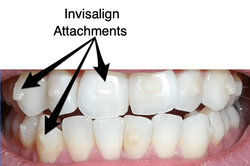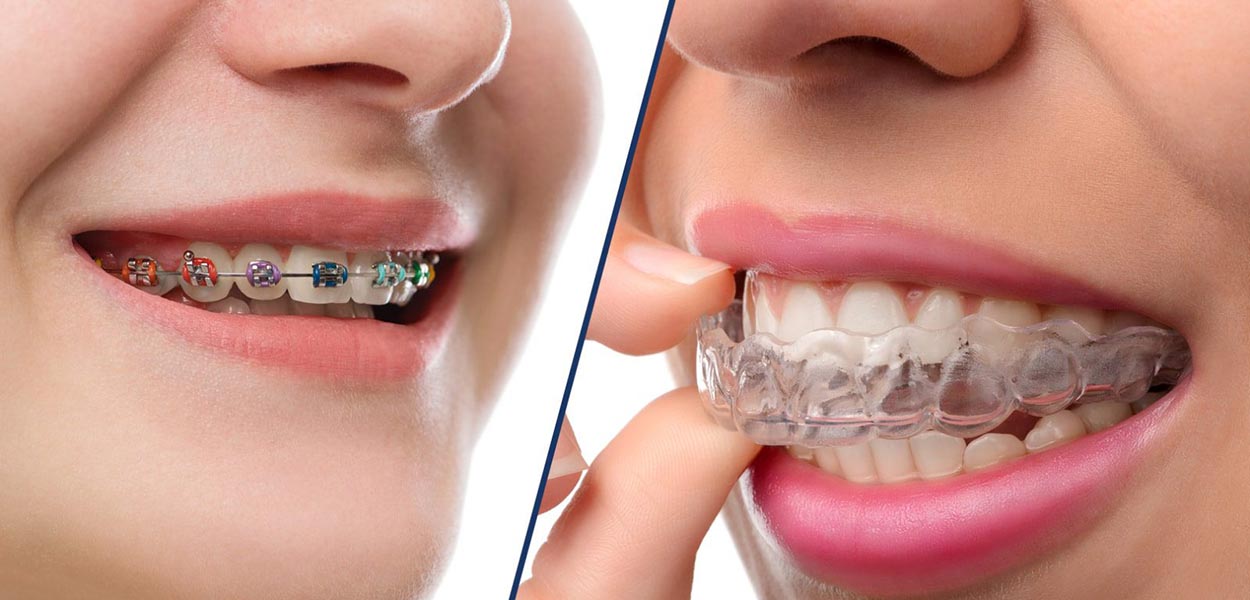Leading Reasons to Select Invisalign Over Other Orthodontic Treatments
Leading Reasons to Select Invisalign Over Other Orthodontic Treatments
Blog Article
Invisalign vs. Conventional Dental braces: Which Alternative Is Right for You?
When thinking about orthodontic therapy, the selection between Invisalign and typical braces presents several vital factors that merit careful analysis. Invisalign uses a very discreet alternative with removable aligners, while conventional braces offer an extra visible yet effective option for serious imbalance. Each choice encompasses unique benefits and disadvantages connected to aesthetics, convenience, therapy duration, and price. Comprehending these nuances is crucial for making an informed choice that straightens with your individual choices and way of life. The concern remains: which option will best fulfill your orthodontic requirements and assumptions?
Review of Therapy Choices

In comparison, conventional dental braces include metal braces and wires that are adhered to the teeth. This approach applies constant stress over time to accomplish alignment. While efficient for intricate orthodontic problems, traditional braces need normal check outs for changes and can posture obstacles in maintaining oral health because of the problem of cleansing around wires and braces.
Both alternatives have their merits, and the option often hinges on details oral problems, lifestyle preferences, and individual compliance. Eventually, seeking advice from an orthodontic specialist is essential for determining one of the most ideal treatment plan tailored to specific needs. Recognizing the subtleties of each option can considerably affect the general success of orthodontic treatment.
Aesthetic Factors To Consider
A considerable aspect influencing the choice in between Invisalign and typical dental braces is the aesthetic appeal each therapy uses. Invisalign aligners are crafted from clear plastic, making them practically invisible when put on.
In comparison, standard braces include metal brackets and cables, which can be extra obvious. While innovations in orthodontic modern technology have resulted in the advancement of smaller brackets and colored elastics, traditional dental braces still preserve a more obvious profile. For some individuals, the presence of braces may prevent them from looking for necessary therapy.
Inevitably, the selection in between Invisalign and traditional braces may rest on individual preferences relating to aesthetic appeals. Clients that prioritize discernment usually favor Invisalign, while those who are much less concerned regarding exposure might decide for traditional dental braces. Recognizing the visual ramifications of each choice is critical for making an informed decision that lines up with one's way of living and choices.
Comfort and Convenience

In regards to convenience, Invisalign aligners are detachable, allowing people to appreciate their favored foods without constraint and preserve optimal oral health. Cleaning and flossing are streamlined, as the aligners can be secured throughout these regimens, whereas traditional dental braces require careful navigating around brackets and cords.
Furthermore, Invisalign's progressive system permits for fewer orthodontic visits. Individuals usually receive multiple sets of aligners at when, which can enhance the therapy process and reduce time invested in the orthodontist's chair. In comparison, standard dental braces require normal changes, making them less convenient for those with hectic timetables. Invisalign. On the whole, the comfort and ease of Invisalign make it an attractive option for several individuals seeking orthodontic treatment.
Treatment Duration and Performance
While both Invisalign and traditional braces are reliable in remedying dental imbalances, the duration of treatment can differ significantly between the 2 choices. Commonly, Invisalign therapy can take anywhere from 12 to 18 months, depending on the intricacy of the case. The clear aligners function by slowly shifting teeth right into their desired positions, and normal follow-ups with an orthodontist help make sure progression remains on course.
In contrast, typical dental braces typically require a longer commitment, typically ranging from 18 months to 3 years. This is due to their fixed nature and using braces and cords, which can be much more reliable for extreme misalignments and complicated cases (Invisalign). The therapy performance of standard dental braces is well-documented, as they allow for specific adjustments and greater control over tooth activity
Eventually, the choice between Invisalign and traditional dental braces might rest on both the expected treatment duration and the particular dental issues at hand. Consulting with an orthodontist is vital, as they can give customized referrals based on private requirements, ensuring the chosen approach lines up with wanted timeframes and outcomes.
Expense Comparison and Insurance Policy Alternatives
Price plays a significant role in the decision-making procedure for individuals taking into consideration orthodontic therapy, whether selecting Invisalign or typical braces. Typically, the cost of Invisalign arrays from $3,000 to $8,000, while conventional dental braces typically set click for more info you back between $2,000 and $6,000. Factors affecting these expenses include the complexity of the instance, the period of treatment, and geographical place.
Insurance policy protection can substantially like this impact out-of-pocket expenses. Several dental insurance strategies give partial coverage for orthodontic treatments, yet the specifics can differ widely. It is crucial for patients to evaluate their insurance coverage to determine the extent of insurance coverage for either alternative. Normally, traditional braces may be a lot more regularly covered by insurance policy strategies contrasted to Invisalign, which some insurers categorize as a cosmetic procedure.
Furthermore, several orthodontic techniques offer adaptable repayment plans, making both treatment choices extra accessible. Clients should ask about prospective funding alternatives and discount rates for ahead of time payments. Reviewing the complete cost, consisting of insurance advantages and settlement strategies, is essential for making an informed decision that straightens with both visual choices and budget considerations.

Final Thought
In recap, the option between Invisalign and typical dental braces hinges on multiple variables, including visual preferences, convenience, therapy duration, and cost. Invisalign provides a very discreet, detachable alternative that helps with dental hygiene and nutritional flexibility, while traditional dental braces may be preferable for intricate oral problems and commonly come with a lower cost point. Ultimately, appointment with an orthodontist is necessary to assess specific scenarios and figure out the most suitable therapy choice for accomplishing optimal oral alignment.
When considering orthodontic treatment, the option between Invisalign and conventional braces provides several vital aspects that merit cautious assessment.Comparing Invisalign and traditional braces exposes distinctive treatment alternatives for orthodontic correction.While both Invisalign and standard dental braces are efficient Your Domain Name in fixing oral imbalances, the duration of therapy can vary considerably in between the 2 alternatives.Cost plays a significant function in the decision-making procedure for individuals taking into consideration orthodontic therapy, whether choosing for Invisalign or typical braces.In recap, the option between Invisalign and traditional dental braces pivots on multiple aspects, including visual preferences, comfort, therapy period, and cost.
Report this page